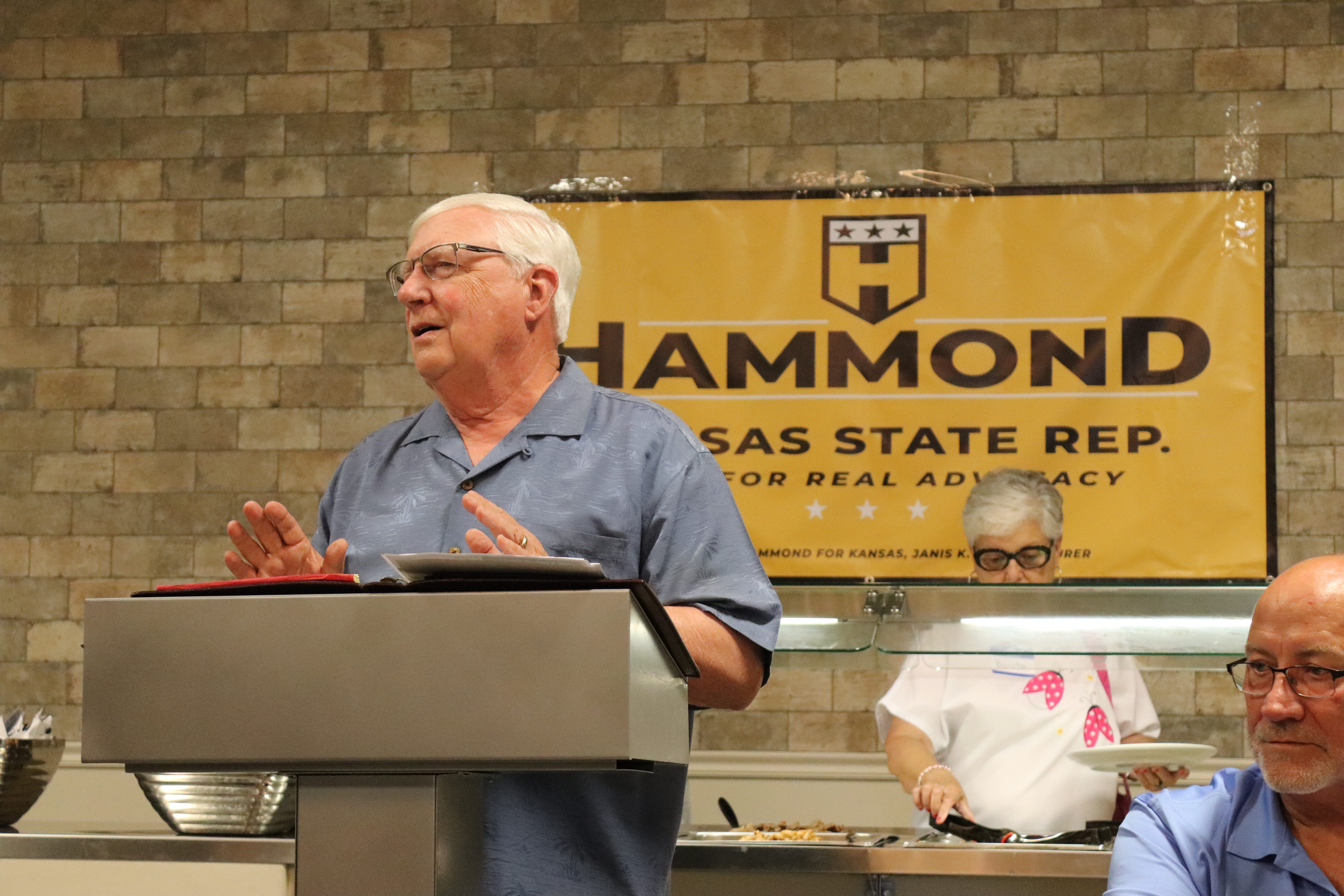BY ALICIA FEYERHERM
Former Fort Hays State University President Ed Hammond hosted a kickoff event for his Kansas House of Representatives District 111 campaign on Tuesday.
“We’ve been doing a lot of grunt work to try and convince people to run for office so I was so thrilled to have Ed run,” Secretary for Ellis County Democrats Anna Towns said. “We’re excited to get going with the campaign.”
When Hammond retired, he had no plans of running for the House seat, but recently decided he did not want the incumbent Republican Barb Wasinger to run unopposed.
“For four years I’ve been watching and what I have found is that we haven’t really been represented well,” Hammond said.
Hammond’s campaign has three main focuses: Medicaid expansion, K-12 education and funding for Fort Hays State University.

Hammond said Hays Med alone loses over $5 million a year because we haven’t had Medicaid expansion. This is in addition to another $2.5 million in losses from other health care offices. Hays Med also does not currently qualify for prescription drug discounts, which costs the community $10 million every year in additional costs per prescription.
“If you consider that my opponent’s been in office for four years, you’re looking at an economic impact in our community of $70 million,” Hammond said. “Stop and think about what $70 million in our economy here could mean for our community.”
Hammond also said K-12 education is disadvantaged due to a lack of Special Education funding. The Kansas Supreme Court ruled the legislature must “adequately fund” K-12 education. This is defined as 92 percent of costs being covered by the state and 8 percent of costs being covered globally.
“What they (legislators) don’t tell you is they also turned around and voted for 50 percent funding of special ed in some other areas,” Hammond said.
State and federal law require schools to provide special education, and therefore the lack of special education funding forces schools to transfer money from their operations to cover those costs.
In Hays, special education is provided not just to public schools, but the school board also provides special education for advanced and at-risk students at Holy Family Elementary and TMP.
“Our school board makes the decision not to charge the private schools for those services,” Hammond said. “We’re the only community that I know of in the state of Kansas that does not charge.”
Hammond said this is done to not disadvantage students who want to attend a parochial school.
“We don’t want to disadvantage those students any more than we want to disadvantage the students attending the public schools,” Hammond said.
USD 489 needs to transfer $1.5 million a year from their “operating budget” that is fully funded over to special education which is not being fully funded.
Fort Hays State University is also underfunded according to Hammond. University funding used to be based on a formula funding model where funding was distributed based on the number of credit hours taught. At the turn of the century, the state went towards a block grant. Initially, the block grant was based on the previous formula using the enrollments of 1999-2000.
“They then did it again the next year, the next, the next year, the next year, and they never changed that formula or those numbers,” Hammond said. “So while Fort Hays was serving maybe 5600 students in 1999-2000, we then grew to serving 15,000 students, but we didn’t get a bigger share of that block grant.”
Last year, Fort Hays State served 18,827 students and served a full-time equivalency of about 10,827. Wichita State served 19,000 students, and served about 11,800 full-time equivalents.
Fort Hays received $39.4 million in funding. Wichita State received $84 million.
“I believe we should be getting 16 percent of the money because we are teaching 16 percent of the students, and we’re currently getting nine,” Hammond said.
Wichita State receives 17 percent of the funding which aligns with Hammond’s calculations.
Hammond said his opponent wants to cut back on funding because enrollments are decreasing.
“Well, I think that’d be fair, if they gave us more money every time we grew, but they’re still treating us like we were an institution of less than 6000 students,” Hammond said.
These policies impact many constituents in District 111.
“If you look at the hospital, the university and the USD, that’s the three largest employers in my opponent’s district, and yet she’s gone out of her way to disadvantage them,” Hammond said, “That’s not advocating for our community.”
Amy Bergman decided to volunteer for Hammond’s campaign because she believed Hammond would be that advocate for the community and accomplish what he says he will.
“I like what he’s running for and standing for and that he recognizes what’s missing and what’s not being done by our current representative,” Bergman said.
Bergman also noted that initiatives like Grow Hays or Imagine Ellis County are less successful if our communities are not supported by our representatives.
“What’s the point if our representatives aren’t fighting for us as well?” Bergman said. “Ed will do that.”
Hammond will be in the Wild West Fest parade this Saturday and then at 10 a.m. on July 7, Hammond will be at the entrance of the Center for Health Improvement talking more about the benefits of expanding Medicaid.

